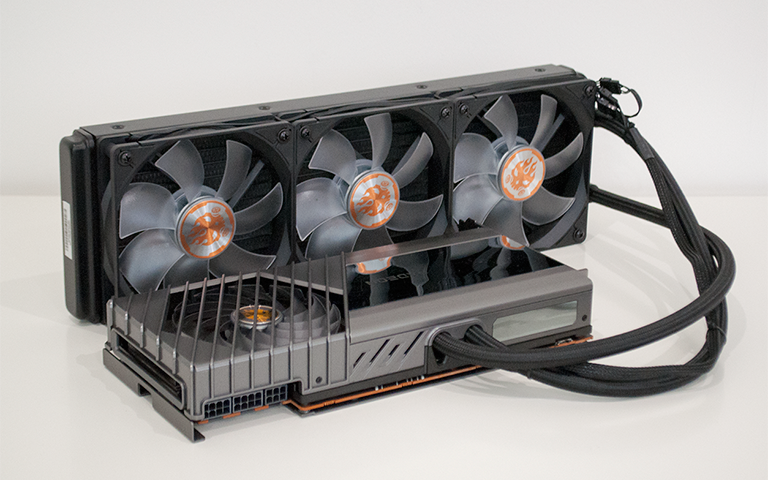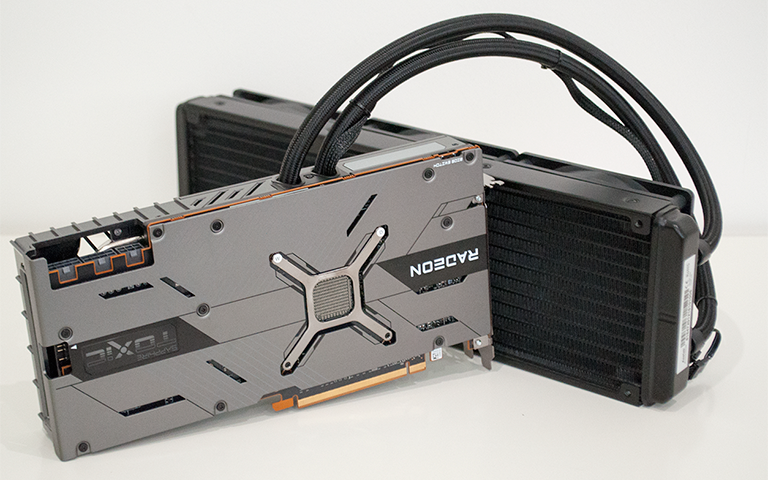Introduction
In the market for a high-end GPU? Prolonged stock shortages have left PC gamers scant pickings, and if the drought continues you may well have to resort to a GeForce GTX 1050 Ti. The situation really is that dire, however there is nothing to stop us eulogising the graphics cards we'd like to own.
At the very top end of the market, we suspect no enthusiast would think twice if Sapphire's Radeon RX 6900 XT Toxic was available to add to basket. Officially launching today, but readily available who knows when, this all-singing, all-dancing solution takes AMD's best-ever GPU and pushes it to the limit with the help of all-in-one liquid cooling.
For a small sum of £1,299 (possibly £2,000+ on Ebay?), Sapphire's Toxic is designed to quench the thirst of upper-class hardware devotees who tend not to accept second best. Nothing wrong with that outlook, and given that AMD's reference board launched at £999 a few months back, a £300 theoretical premium, in today's climate, is reasonable given the heightened cooling and overall scope of the Toxic design.
Measuring 269mm x 131mm x 44mm, the card occupies the best part of two-and-a-half slots (excluding radiator) and looks suitably smart with its grey shroud outfitted with mirrored and backlit sections that help lend a high-quality look and feel. The hexagonal fan cutout also blends well, and as expected, there's a full-size metal backplate to enhance rigidity, aid cooling and complete the aesthetic.
What sets the Toxic apart from most other graphics cards is the closed-loop liquid cooler. A low-profile pump, neatly hidden beneath the shroud, is connected to a 360mm radiator via 470mm lengths of sleeved rubber tubing. Shifting heat away from the GPU should be no problem for a cooler of this magnitude, and all four fans (three on the radiator, another on the card itself) offer RGB lighting as standard. An attractive piece of kit, though it's a shame Sapphire didn't find a more seamless means of routing the fan cables; a splitter cable tied to one tube isn't the most elegant.
As a card that's all about excess, there are upgrades scattered throughout. Sapphire's custom PCB employs a 13+1-phase digital VRM design for the GPU, plus two phases for memory, a dedicated die-cast heatsink interspersed with a couple of heatpipes sits beneath the graphics-card fan for enhanced VRM and memory cooling, and power is sourced via an 8+8+6 PCIe configuration.
All of the aforementioned point to healthy out-the-box frequencies, and Sapphire duly obliges. The default BIOS ships with a game clock of 2,135MHz (up from 2,015MHz) and a boost clock of 2,365MHz (up from 2,250MHz). A secondary, more conservative BIOS, lowers boost clock a fraction to 2,340MHz, while both keep the 16GB GDDR6 frame buffer humming along at a reference 16Gbps.
Not bad, but given that Sapphire describes the Toxic cards as featuring cherry-picked GPUs, you expect a little more. Turns out you can crank the dial up to eleven by enabling Toxic Boost from within the manufacturer's Trixx software utility. Effectively a one-click overclock, Toxic Boost ramps boost frequency right the way up to 2,660MHz while also increasing memory speed to 16.8Gbps. Don't expect any other off-the-shelf 6900 XT to be as quick.
The same Trixx software can be used to switch BIOS from within Windows and also takes care of RGB customisation. The bulk of the backlit decor is on the front of the card, making it best suited to a vertical installation, but there is an option to turn off the lighting completely, and if you prefer to keep things in sync, an aRGB header is located toward the end of the card. Lastly, display outputs are kept to the familiar quartet of three DisplayPort 1.4 and a single HDMI 2.1.
We've just about managed to squeeze the 360mm radiator inside our AMD Ryzen 9 3950X test platform, which remember already has a 360mm CPU cooler in the roof, and we're intrigued to discover how well the 360mm radiator functions behind the solid front door of the Fractal Design Define 7 chassis. Let's run the numbers, shall we?






